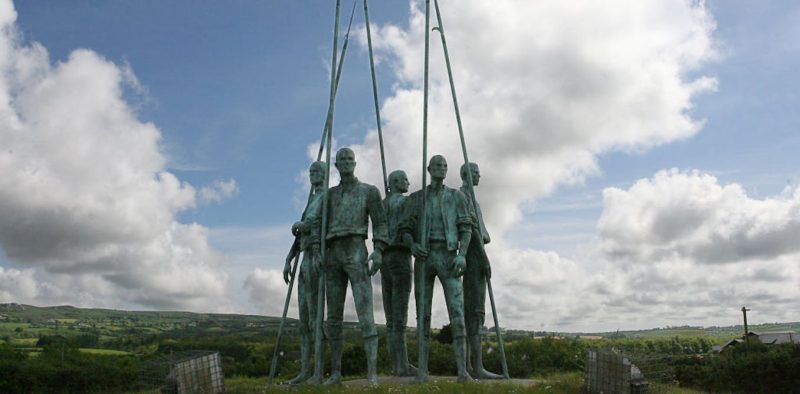
Shortly before midnight on May 23, 1798, a mail coach heading to Belfast was intercepted and burned just north of Dublin. This act of arson wasn’t mere vandalism; it was the spark intended to ignite a revolution across Ireland, a nation then under British rule.
Ireland at the time was deeply divided along religious lines. Anglicans held the power as landlords and administrators, Presbyterians formed a strong middle class but remained second-class citizens, and the vast Catholic majority lived in near-destitution under oppressive penal laws. This deeply stratified society, however, was about to witness an unprecedented alliance.
The Society of United Irishmen, founded in the early 1790s, transcended these sectarian divides. Its goal? A republic, modeled after the United States and France, where the people ruled themselves. Catholics and Presbyterians flocked to the cause, even attracting some Anglicans. Lord Edward Fitzgerald, an Anglican nobleman, famously renounced his title to lead the society’s militia.
By 1798, a quarter of a million men, many armed with pikes, awaited the call to arms. This was a truly remarkable moment of unity; the last time Catholics and Presbyterians would unite in such a significant way until the Good Friday Agreement of 1998. The movement’s ideals were best embodied by Theobald Wolfe Tone, a Protestant who declared himself a lover of justice and a detester of tyranny, reflecting the Enlightenment principles of liberty, equality, and self-governance which fueled the rebellion.
The United Irishmen’s vision was a secular republic, separating church and state – a radical departure from the religious landscape of the time. Their creed, often expressed as a question-and-answer dialogue, symbolized their inspiration from the American and French Revolutions, emphasizing the planting of the ‘Tree of Liberty’ in Ireland.
But the British were not blind to the brewing rebellion. A brutal crackdown ensued, with homes ransacked, people flogged and executed. This oppression is vividly captured in the ballad “The Wearing of the Green.” The arrest and death of many leaders, including Fitzgerald, meant the initial signal for the rebellion was far less effective than hoped; the uprising was fragmented and poorly coordinated.
Despite the valiant efforts of the rebels and some support from France, the rebellion was brutally suppressed by October. The aftermath saw a deliberate attempt to portray the rebellion as a Catholic uprising against Protestants, aided by the actions of both sides. The Act of Union in 1800 granted full citizenship to Presbyterians within the British state, further fracturing the alliance.
The memory of the 1798 rebellion became largely associated with Catholic liberation. Groups like the Fenians in the 1860s drew inspiration from the United Irishmen. However, when Ireland finally achieved independence, it wasn’t the secular republic envisioned in 1798. The new state was predominantly Catholic.
The partition of Ireland in 1922 created Northern Ireland, where Protestants outnumbered Catholics, leading to decades of discrimination and conflict known as “the Troubles.” The civil rights movement of the 1960s, inspired by Martin Luther King Jr., aimed for equality but was met with violence, escalating the conflict.
The 1994 ceasefire, coinciding with the bicentennial of the 1798 rebellion, marked a turning point. Kevin Whelan’s book, “The Tree of Liberty,” helped to reframe the narrative, emphasizing the shared Enlightenment ideals of the 1798 rebels. Finally, in 1998, the Good Friday Agreement largely achieved the goals of the 1798 rebellion: equal rights and self-determination for all citizens, regardless of religion, marking a poignant end to a long and complex chapter in Irish history.










